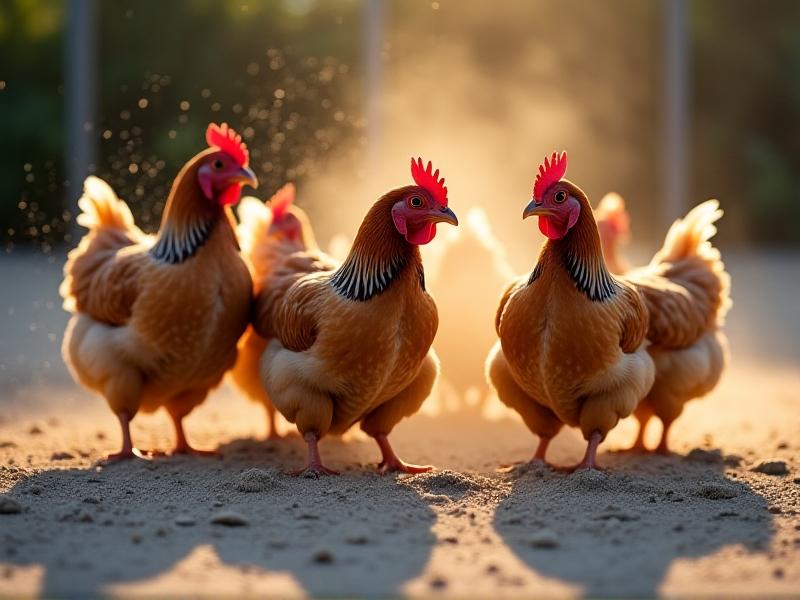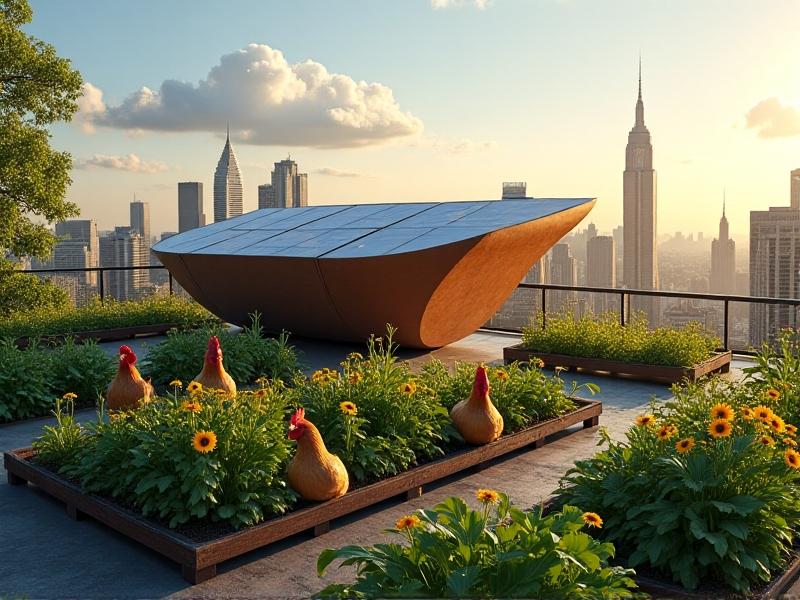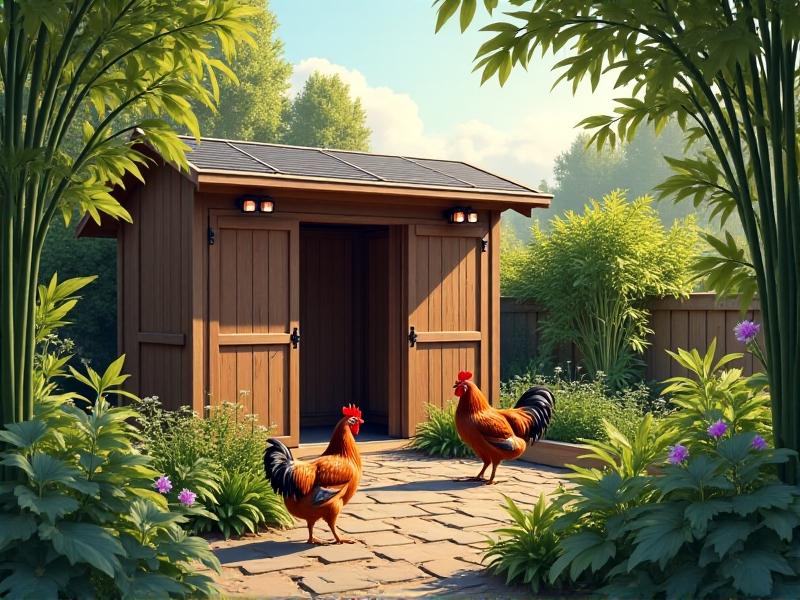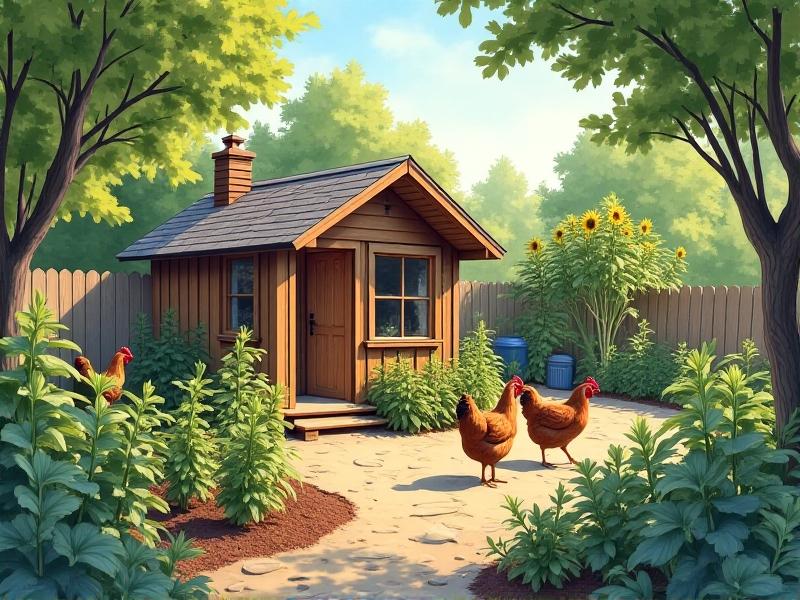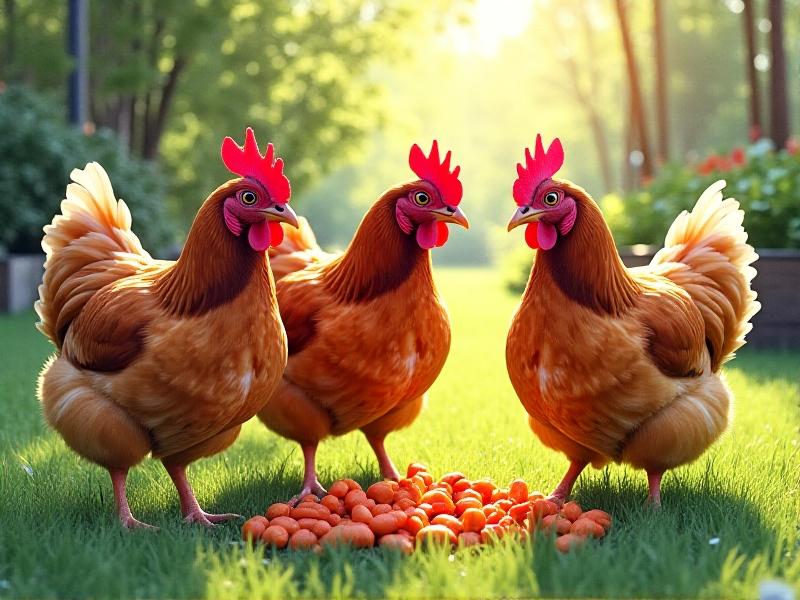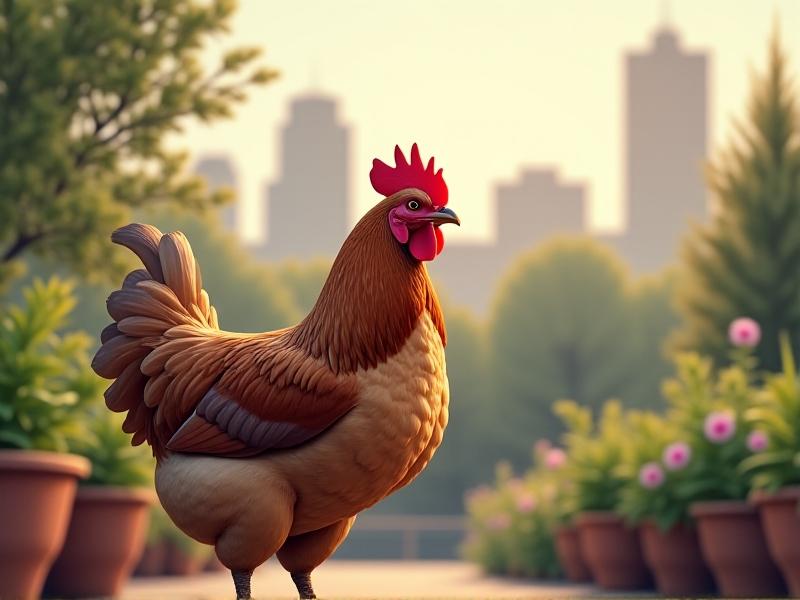Automated Urban Coops: Tech Solutions for Busy City Dwellers
The Rise of Urban Chicken Keeping: Why City Dwellers Are Flocking to Coops
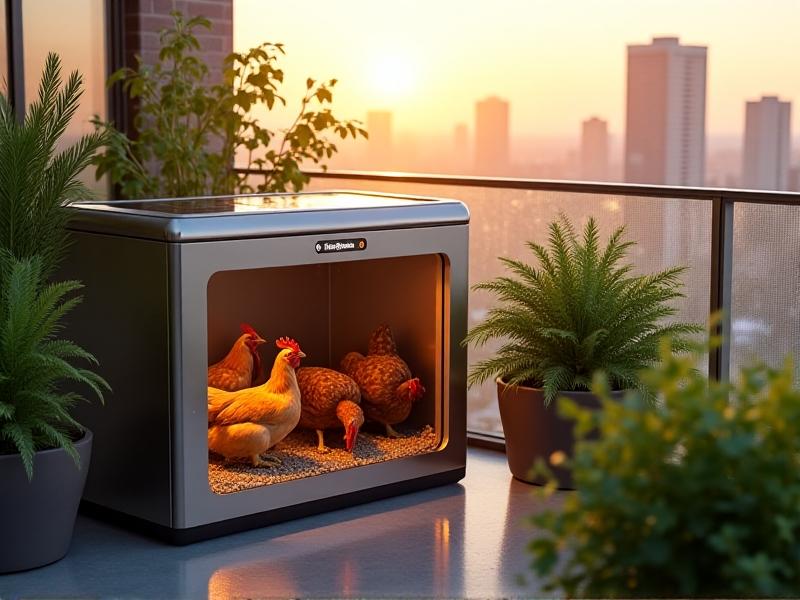
Urban chicken keeping has surged in popularity over the last decade, driven by a growing desire for sustainable living and hyper-local food sources. Busy professionals, families, and even apartment dwellers are discovering that automated coops make it possible to raise hens without sacrificing their hectic schedules. Cities like Seattle, Berlin, and Tokyo have seen a 40% increase in residential poultry permits since 2020, according to urban farming advocacy groups. This trend isn’t just about fresh eggs—it’s a statement against industrialized food systems and a step toward self-sufficiency.
What’s fueling this movement? For one, advancements in IoT (Internet of Things) have democratized agricultural tech. A decade ago, maintaining a coop required daily manual labor: feeding, watering, cleaning, and temperature checks. Today’s automated systems handle these tasks silently, appealing to time-strapped urbanites. Social media has also played a role, with influencers showcasing chic, minimalist coops that double as garden features. The result? A fusion of practicality and aspirational lifestyle that resonates with eco-conscious millennials and Gen Z.
Challenges of Traditional Coops in Cities: Space, Time, and Noise

Traditional coops often clash with urban realities. Space limitations top the list—most city homes lack sprawling yards, forcing owners to cram coops into alleys, rooftops, or balconies. Manual maintenance becomes a chore when juggling work commutes and social lives. Forget to refill water? Hens suffer. Skip a cleaning day? Odors irritate neighbors. Noise is another hurdle: roosters are banned in most cities, but even hens clucking at dawn can draw complaints in tight-knit apartment complexes.
Predators pose unexpected risks, too. Raccoons, rats, and birds of prey thrive in cities, and standard coops may lack robust defenses. Add seasonal challenges—like keeping hens warm during winter or cool in summer heatwaves—and it’s easy to see why many urban chicken projects fizzle out. Automation addresses these pain points head-on, offering solutions that fit seamlessly into fast-paced lifestyles.
Smart Feeding and Watering Systems: Precision Nutrition on Autopilot
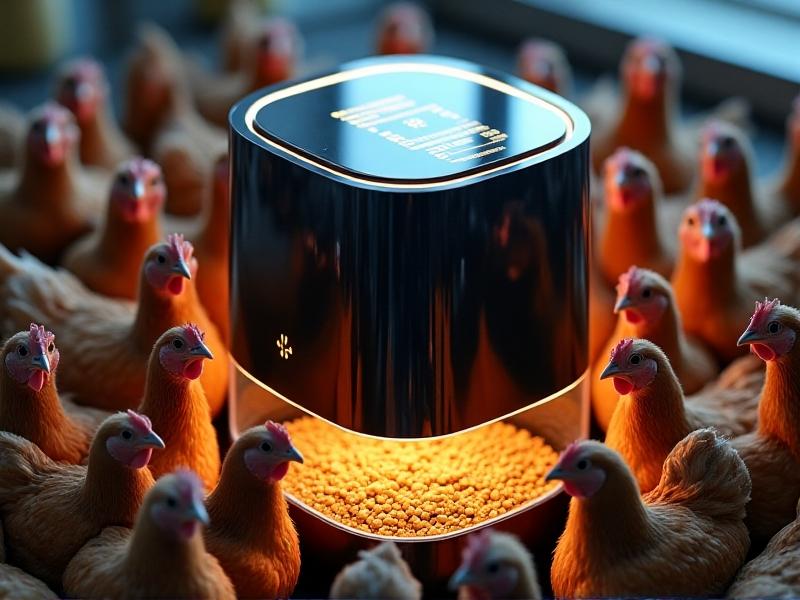
Automated feeders and waterers are revolutionizing urban poultry care. Devices like the HenBit Pro use sensors to detect feed levels and dispense customized portions via smartphone app. Owners input dietary needs—say, extra calcium for laying hens—and the system blends supplements into the feed automatically. Waterers with self-cleaning filters and heating elements prevent freezing in winter, while float valves ensure a constant supply. These tools eliminate daily chores and reduce waste by up to 30%, according to agritech studies.
Some systems go further. The CluckTrack app syncs with smart feeders to analyze consumption patterns, alerting owners to sudden changes that might indicate illness. For urbanites traveling frequently, integrations with services like Amazon Dash enable automatic feed deliveries when supplies run low. It’s a hands-off approach that prioritizes animal welfare without demanding constant human oversight.
Automated Climate Control: Coops That Adapt to the Elements
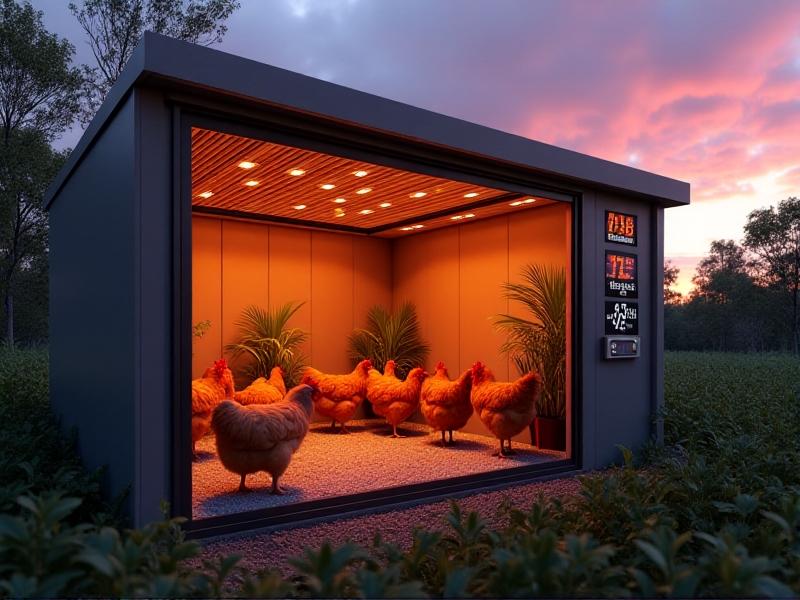
Extreme weather can jeopardize urban flocks, but climate-controlled coops mitigate these risks. Take the CoopMatic 5000: its built-in thermostats adjust ventilation fans and heating pads based on real-time data from weather APIs. During heatwaves, misting systems activate to cool hens, while insulated walls retain warmth in snow. Humidity sensors prevent respiratory issues by triggering dehumidifiers when moisture levels spike. These features aren’t just convenient—they’re lifesaving in cities prone to climate volatility.
Energy efficiency is a key design focus. Solar-powered models like SunHen generate 80% of their energy needs, with battery backups for cloudy days. Others use geothermal principles, burying heat-exchange pipes underground to stabilize temperatures year-round. For renters, modular systems like BreezyCoop attach to windows or balconies, using apartment HVAC systems to maintain comfort. The result? Hens thrive regardless of outdoor conditions, and owners avoid hefty utility bills.
Eggcellent Automation: From Nest to Kitchen with Zero Effort
Egg collection is the most labor-intensive chore in traditional coops, but robotic systems are changing the game. The EggMover X3 uses gentle conveyor belts to transport eggs from nesting boxes to a cleaning chamber, where UV-C lights sanitize shells without chemicals. Owners retrieve eggs from a countertop drawer linked to their kitchen—no muddy boots required. Advanced models like the HenHouse Helper even sort eggs by size and date, sending expiration alerts via app.
These innovations reduce breakage and contamination risks. In standard coops, eggs left unattended can attract pests or crack underfoot. Automated retrieval ensures eggs are handled minimally, preserving freshness. For urban farmers selling surplus eggs at local markets, built-in labeling systems print dates and nutritional info, streamlining small-scale commerce.
AI Guardians: Protecting Flocks from Predators and Illness
Predator attacks are a grim reality, but AI-driven security systems offer peace of mind. Devices like PredaStop use motion-activated lasers and ultrasonic pulses to deter raccoons without harming them. Night-vision cameras trained on machine learning algorithms distinguish between harmless critters and genuine threats, triggering alarms or text alerts. Inside the coop, microphones analyze avian vocalizations; sudden distress calls activate lockdown protocols, sealing hens in a reinforced compartment.
Health monitoring is equally proactive. The RoostRx wearable collar tracks vital signs like heart rate and activity levels, flagging anomalies indicative of disease. Owners receive vet-recommended care tips via app, from adjusting diets to scheduling checkups. These tools empower novices to spot issues early, reducing mortality rates in urban flocks by up to 65%.
Seamless Smart Home Integration: Controlling Coops with Voice Commands
Automated coops are increasingly part of the smart home ecosystem. Imagine telling Alexa to “check egg inventory” or using Google Home to adjust coop temperatures during a heatwave. Platforms like CoopConnect bridge poultry care with existing IoT devices, letting users automate routines. For example, lights can dim at sunset to encourage roosting, or security cameras can sync with Ring doorbells to monitor both home and coop from one app.
These integrations extend to sustainability features. Excess solar energy from coops can power smart garden lights or charge electric bikes. Composters linked to coops convert manure into fertilizer for apartment herb gardens, closing the urban farming loop. It’s a holistic approach that aligns poultry keeping with broader eco-goals.
Sustainability Wins: How Automated Coops Reduce Urban Waste
Automated coops aren’t just convenient—they’re environmental powerhouses. Food waste, a major urban issue, becomes chicken feed via apps like ScrapsToClucks, which connect users with restaurants donating surplus produce. Coop manure, often a disposal headache, gets processed into odorless biogas or fertilizer through built-in digesters. Rainwater harvesting systems, common in models like AquaCoop, cut water usage by 50%, while solar panels reduce grid reliance.
The carbon math is compelling: a study by Urban Farm Labs found that a six-hen automated coop offsets 180 kg of CO2 annually by diverting waste and replacing store-bought eggs. Multiply that by thousands of urban coops, and the impact rivals small-scale renewable energy projects. Cities like Portland now offer tax incentives for installing eco-conscious coops, recognizing their role in climate resilience.
From Prototype to Backyard: Success Stories in Automated Poultry
Take Maria, a nurse in Barcelona who juggles 12-hour shifts with raising three kids. Her CluckBox Pro tends to hens autonomously, letting her harvest eggs via a locker-style pickup system. Or Tokyo’s PoultryHackers Collective, which modded old vending machines into coops with AI egg vendors. These stories underscore automation’s versatility—whether for busy families or tech tinkerers.
Commercial ventures are thriving too. Startup Roost.ly leases coops to apartment buildings, managing maintenance via subscription. Tenants enjoy fresh eggs without lifting a finger, while property managers tout eco-credentials. Such models hint at a future where automated coops are as ubiquitous as rooftop beehives.
The Future of Urban Coops: AI, Robotics, and Beyond
Emerging tech promises even greater autonomy. Researchers are testing coops that 3D-print custom feed pellets from food waste, while drone integrations could deliver supplies or transport hens to vet appointments. AI might soon predict egg-laying patterns to optimize collection times, or use facial recognition to monitor individual hen health. As cities densify, vertical “poultry towers” with stacked automated units could make urban farming scalable.
Yet challenges remain. Critics cite high upfront costs and e-waste from obsolete tech. Advocates counter that leasing models and modular designs extend accessibility. One thing’s clear: as automation evolves, urban chicken keeping will keep rewriting the rules of sustainable city living.
